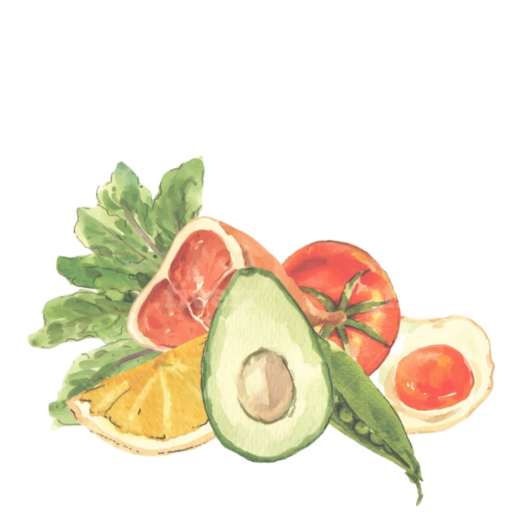If you’ve been searching the health and wellness space, you’ve heard the terms hunger, satiety, and intuitive eating. The goal is to eat intuitively. But for many the thought of this is terrifying as they cannot hear their bodies’ hunger and satiety signals. You might even be thinking, that’s what got me into this mess with my body, and that definitely will not work.
Let’s dive into what hunger, satiety, and intuitive eating mean and how to master them. As a nutritional therapy practitioner helping you take back your health and improve your metabolism, I believe in simple holistic health solutions. So, let’s break it down.
Understanding Hunger, Satiety, and How to Eat Intuitively
Hunger Defined
According to the Merriam Webster Dictionary, hunger is defined as a craving or an urgent need for food or a specific nutrient. It can also be described as an uneasy sensation caused by the lack of food or a weakened condition brought about by prolonged lack of food. We’ve all experienced hunger in one form or another.
But here’s the tricky part about hunger—it’s not always straightforward. Sometimes, our hunger hormones may not signal properly. We might feel hungry all the time or never feel hungry at all. There are various reasons for this, such as stress, boredom, or tiredness.
To truly understand hunger, we need to learn to differentiate between genuine physical hunger and other factors that trigger our desire to eat.
Satiety Demystified
Satiety, on the other hand, is that feeling of fullness that follows a meal. It’s not about being overstuffed but comfortably full, able to make it to the next meal without constantly snacking. For some people, getting that “I’m full” signal is a challenge. Some eat too fast, not giving their bodies time to catch up, while others never seem to experience that feeling of fullness.
Satiety is crucial because it’s the cornerstone of intuitive eating. To eat intuitively, we must trust our bodies to tell us when we’re hungry and when we’re full. But if our satiety signals are off, it becomes a challenge to eat intuitively.
The Essence of “Eat Intuitively”
Intuitive eating is essentially about listening to your body’s signals. It means eating when you’re genuinely hungry and stopping when you’re full or satiated. But as we’ve seen, this can be complicated when hunger and satiety signals are unreliable.
So, how do we get these signals back on track? Here are some practical steps:
- Eat Within the First 2 Hours of Waking – If you rarely feel hungry or don’t feel hungry in the morning, it’s essential to eat something within the first two hours of waking. Even if you’re not hungry, this step is crucial to jumpstart your hunger signals, especially if you’ve been fasting or eating one meal a day.
- Prioritize Protein and Balanced Meals – To help your body maintain a balance, focus on getting enough protein and complex carbohydrates in each meal. A protein-rich meal, coupled with fiber-filled vegetables, will keep you fuller for longer. This balance will help you avoid quick hunger and promote satiety.
- Mindful Eating – Eating slowly and mindfully can also help improve your body’s signaling. Put your fork down between bites, chew your food thoroughly, and sip water but avoid overdrinking, which can give you a false sense of fullness.
- Track Your Intake Initially – While you’re healing and re-establishing your body’s hunger and satiety signals, tracking your food intake is helpful and probably needed. It ensures you’re getting the right nutrients and maintaining a balance. Once you can genuinely hear your hunger and fullness signals, you can gradually reduce tracking.
- Trust Your Body – The ultimate goal is to reach a point where you can trust your body to tell you when you’re hungry and when you’re full. When your body is well-nourished, it will naturally maintain a healthy weight without the need for constant tracking.
To Wrap it Up
As we work towards intuitive eating, we must acknowledge that it’s not a straight path. But with some work and a focus on healing and nourishing our bodies, we can eventually reach a point where we no longer need to track every bit of food we eat.
My mission is to guide you towards healthier, more intuitive eating. Let’s work on our body’s signals now so that we can enjoy easy, intuitive eating in the future. Remember, the goal is to live life and enjoy food without the need to track it forever. So, let’s take the necessary steps now to make intuitive eating an effortless part of our lives.
Related episode – https://holistichealthmadesimple.com/hunger/
